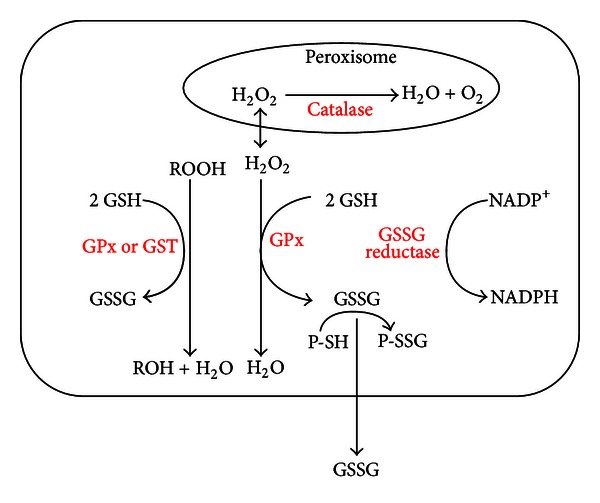Figure 1.

Antioxidant function of GSH. The hydrogen peroxide, produced during the aerobic metabolism, can be metabolized in the cytosol by GSH peroxidase (GPx) and catalase in peroxisomes. In order to prevent oxidative damage, the GSSG is reduced to GSH by GSSG reductase at the expense of NADPH, forming a redox cycle [17]. Organic peroxides can be reduced both by GPx and GSH-transferase (GST). In extreme conditions of oxidative stress, the ability of the cell to reduce GSSG to GSH may be less, inducing the accumulation of GSSG within the cytosol. In order to avoid a shift in the redox equilibrium, the GSSG can be actively transported out of the cell or react with protein sulfhydryl groups (PSH) and form mixed disulfides (PSSG).
